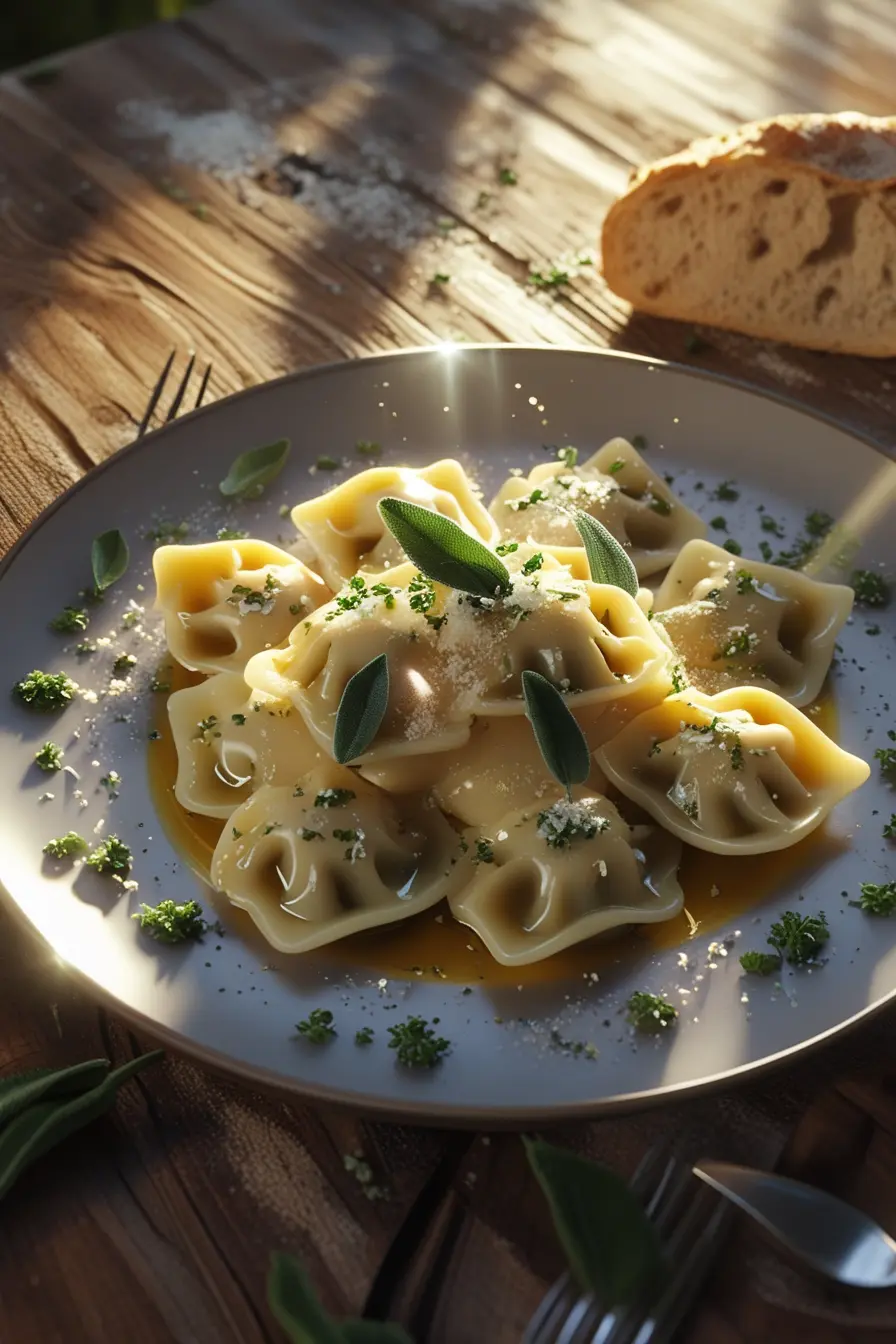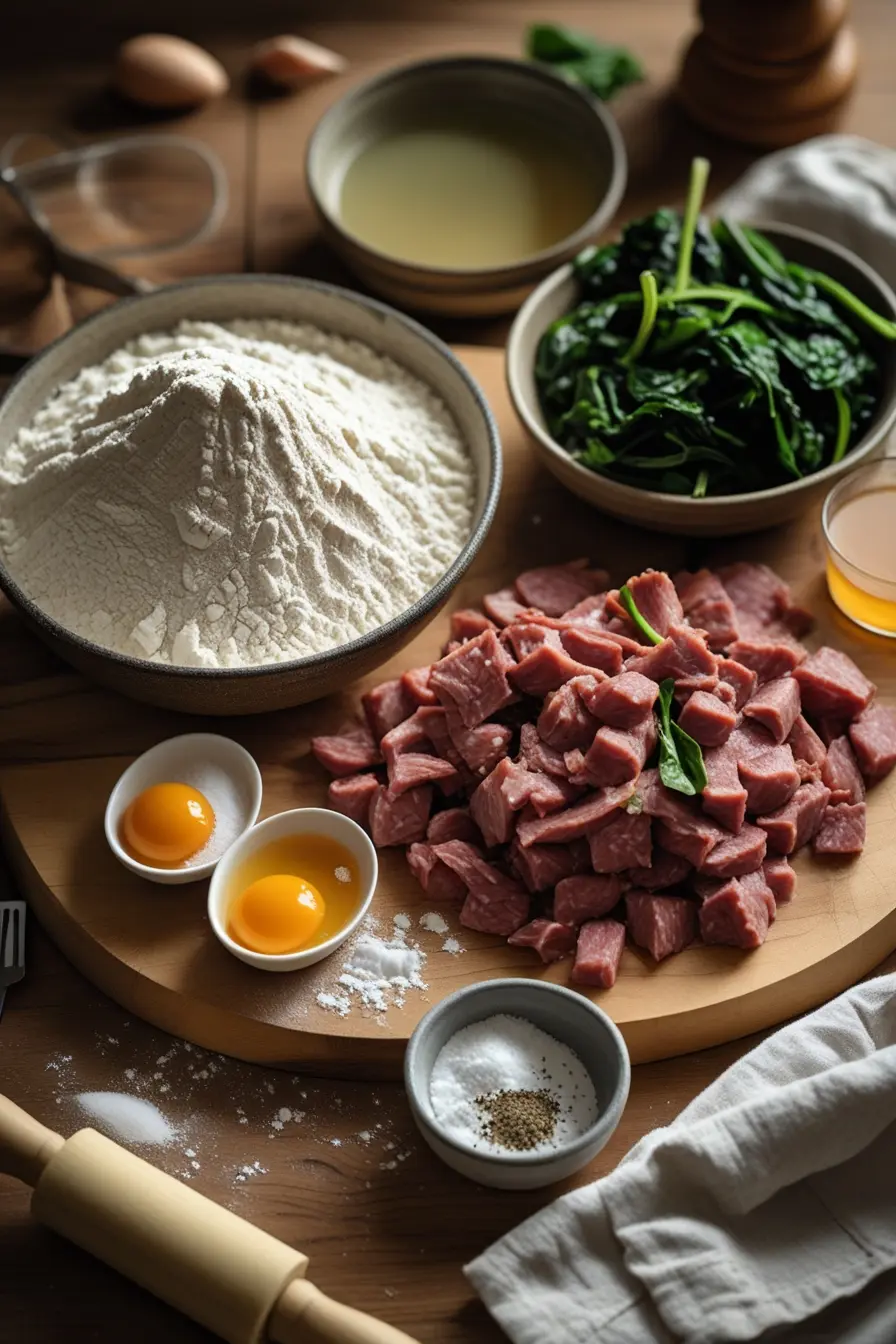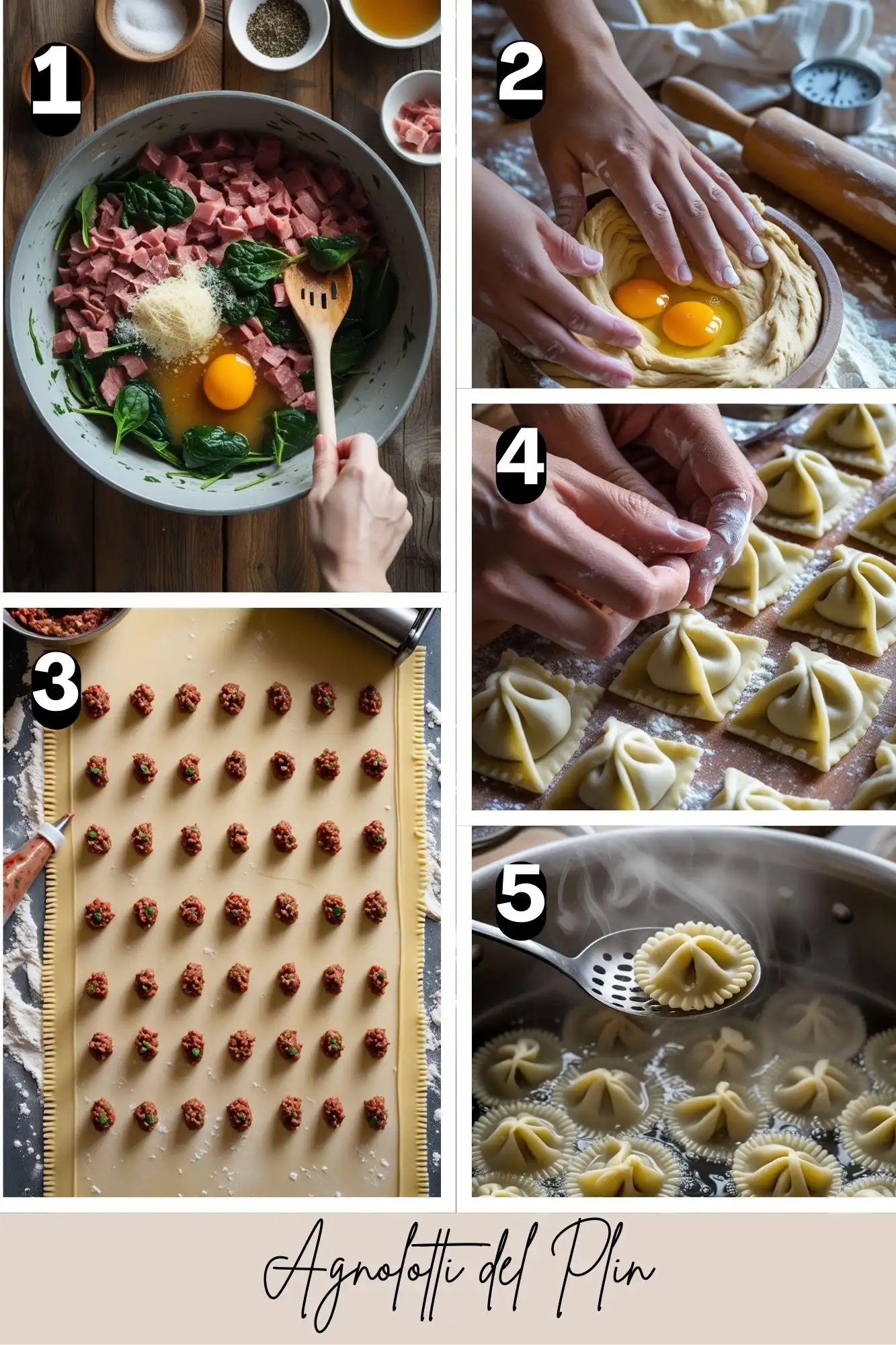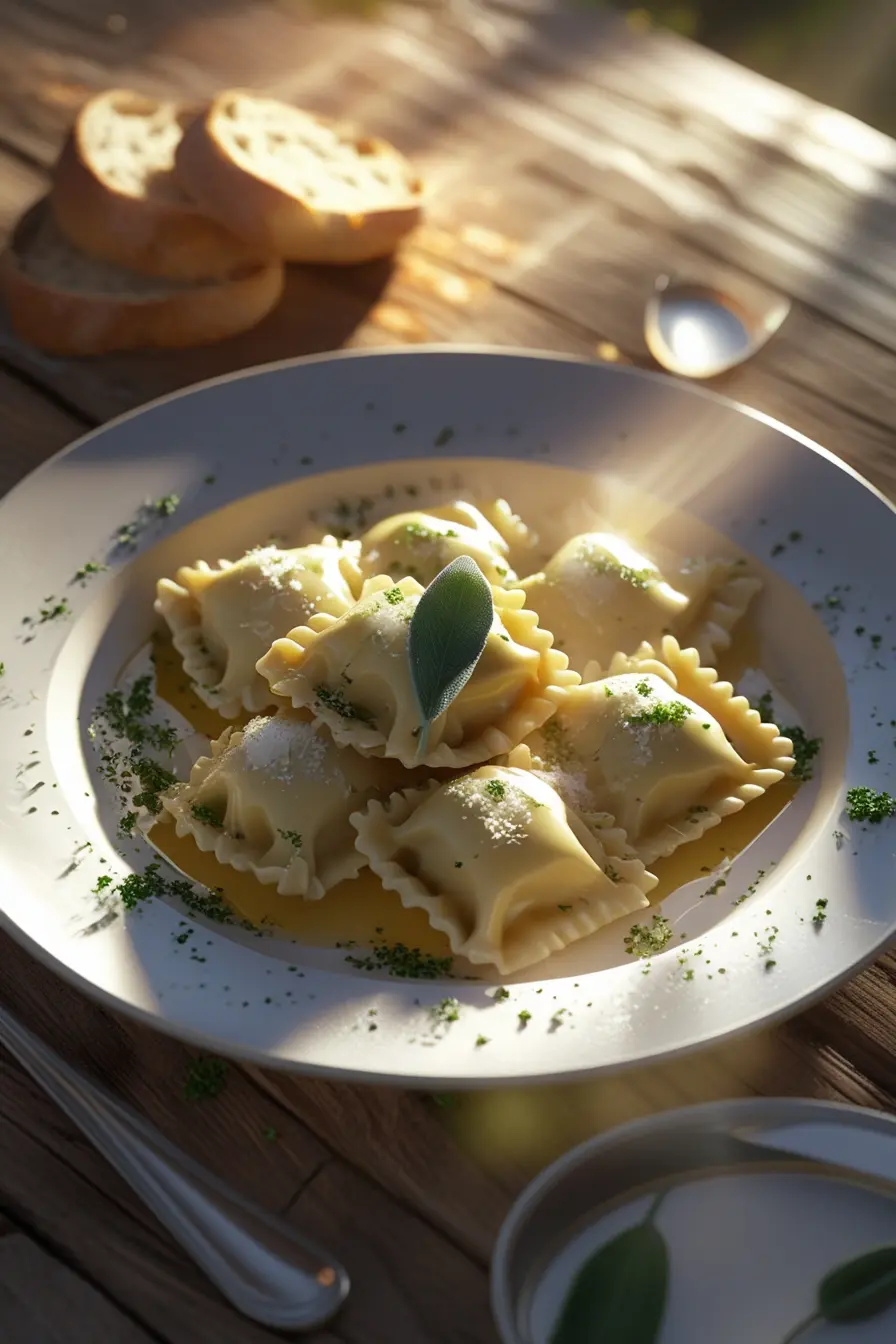Agnolotti Del Plin Recipe.

Table of Contents
What Makes Agnolotti del Plin Unique? Origins & Recipe Tips
Introduction
Did you know that despite the vast array of pasta shapes in Italy, one small, pinched parcel holds a particularly revered status in Piedmont? It’s true; data suggests that while many pasta types are globally recognized, Agnolotti del Plin maintains a fiercely regional identity, cherished for its specific form and filling. If you’re looking to find out what makes agnolotti del plin special with this guide to its origin and how to make it, you’ve come to the right place.
This isn’t just another pasta recipe; it’s a journey into the heart of Piedmontese culinary tradition. Unlike many filled pastas that boast rich, complex sauces, the beauty of agnolotti al plin (as they are often called) lies in their simplicity – a delicate meat filling encased in thin pasta, traditionally served with minimal dressing to let the flavour shine. We’ll explore the history behind this unique dish and provide you with a step-by-step guide to creating your own, complete with essential tips and tricks.
Ingredients List
Crafting authentic Agnolotti del Plin requires quality ingredients. Think of these as the building blocks for a truly memorable dish.

For the Filling:
- 500g mixed roasted meats (traditionally beef, pork, and rabbit or chicken), finely minced or ground. Leftover roasts are perfect!
- 100g spinach or escarole, blanched, squeezed dry, and finely chopped.
- 50g Parmesan cheese, grated. Choose a good quality, aged Parmigiano Reggiano for the best flavour.
- 1 egg, beaten.
- Pinch of nutmeg, freshly grated.
- Salt and freshly ground black pepper to taste.
- Optional: A splash of red wine or broth from the roast for moisture.
For the Pasta Dough:
- 300g ’00’ flour (or all-purpose flour if ’00’ is unavailable). ’00’ flour gives the dough a silky texture.
- 3 large eggs. Ensure they are fresh and at room temperature.
- Pinch of salt.
Potential Substitutions:
- Meat: While the traditional mix is key, you could use just beef and pork, or even a mix including veal. For a vegetarian option, a robust filling of ricotta, spinach, and roasted mushrooms works well, though it won’t be agnolotti del plin in the classic sense.
- Flour: All-purpose flour can be used, but the texture will be slightly less fine.
- Cheese: Pecorino Romano could be used, but it has a stronger, saltier flavour than Parmesan.
Timing
Making Agnolotti del Plin is a labour of love, but the results are incredibly rewarding. Here’s a breakdown of the time involved:
- Preparation Time: Approximately 90 minutes (includes making the dough, preparing the filling, and resting the dough). This is often 20% less time than tackling more complex filled pasta shapes due to the simpler ‘plin’ technique.
- Resting Time: 30 minutes for the dough.
- Cooking Time: 3-5 minutes (fresh pasta cooks very quickly).
- Total Time: Approximately 2 hours 20 minutes.
While it seems like a significant time investment, much of the prep can be done in stages, making it manageable even on a weekend afternoon.
Step-by-Step Instructions
Let’s get started on bringing this Piedmontese gem to life. Follow these steps carefully, and you’ll be enjoying your own homemade agnolotti in no time.

Step 1: Prepare the Filling
Combine the finely minced roasted meats, chopped spinach, grated Parmesan cheese, beaten egg, nutmeg, salt, and pepper in a large bowl. Mix thoroughly until everything is well combined. This is where the magic starts – the aroma of the roasted meats mingling with the spinach and cheese is truly inviting. If the mixture seems a little dry, add a splash of broth or wine to moisten it slightly. Taste and adjust seasoning if needed. Cover and set aside while you make the dough.
Step 2: Make the Pasta Dough
On a clean work surface or in a large bowl, pile the flour and make a well in the center. Crack the eggs into the well and add the pinch of salt. Using a fork, gently whisk the eggs, gradually incorporating the flour from the sides of the well. Once a shaggy dough forms, use your hands to bring it together.
Knead the dough on a lightly floured surface for 8-10 minutes until it is smooth, elastic, and no longer sticky. This kneading develops the gluten, which is crucial for a good pasta texture. Wrap the dough tightly in plastic wrap and let it rest at room temperature for at least 30 minutes. This resting period allows the gluten to relax, making the dough easier to roll.
Step 3: Roll the Pasta Sheets
Divide the rested dough into 2-3 portions. Keep the portions you aren’t working with covered. Using a pasta machine or a rolling pin, roll out one portion of dough into a long, thin sheet. Aim for a thickness of about 1mm or setting number 7 on most pasta machines. The thinner the pasta, the more delicate the agnolotti will be, allowing the filling to be the star. Keep the rolled sheet lightly floured to prevent sticking.
Step 4: Place the Filling
Lay the rolled pasta sheet flat on a lightly floured surface. Place small mounds of filling (about the size of a hazelnut) along one half of the pasta sheet, leaving about 1.5-2 cm of space between each mound and from the edge. This spacing is important for the ‘plin’ technique.
Step 5: Fold and Seal
Carefully fold the other half of the pasta sheet over the filling, aligning the edges. Gently press down between the mounds of filling to seal the pasta and remove any air pockets. You should have a long strip with bumps of filling along one edge.
Step 6: The ‘Plin’ Technique
This is the signature step! Using your thumb and forefinger, pinch (“plin” in Piedmontese dialect) the pasta between each mound of filling. As you pinch, gently pull the agnolotti away from the main strip of pasta. This creates the characteristic small, rectangular shape with a pinched edge. If the pasta is sticking, dust your fingers lightly with flour. Place the finished agnolotti on a lightly floured baking sheet lined with parchment paper, ensuring they don’t touch.
Step 7: Repeat and Cook
Repeat steps 3-6 with the remaining dough and filling. Once all the agnolotti are formed, you can cook them immediately or freeze them for later (see storing tips). To cook, bring a large pot of generously salted water to a rolling boil. Gently add the agnolotti and cook for 3-5 minutes, or until they float to the surface and the pasta is tender. Avoid overcrowding the pot; cook in batches if necessary.
Nutritional Information
While the exact nutritional content can vary based on the specific meats used and portion size, here’s a general overview based on typical ingredients:
- Calories: Approximately 350-450 per serving (around 150g).
- Protein: High, typically 25-35g per serving, thanks to the meat and eggs.
- Carbohydrates: Moderate, around 30-40g per serving, primarily from the pasta.
- Fat: Variable, depending on the meat cuts, but generally moderate, 10-20g per serving.
- Fiber: Low, though the addition of spinach adds a small amount.
Data Insight: Compared to a cheese-filled ravioli, Agnolotti del Plin often has a higher protein content due to the significant meat component.
Healthier Alternatives for the Recipe
Looking to lighten things up or adapt for dietary needs? Here are some ideas:
- Leaner Meat Filling: Use leaner cuts of beef or pork, and increase the proportion of chicken or turkey.
- More Vegetables: Boost the vegetable content in the filling by adding finely grated carrot or zucchini (ensure they are squeezed dry to avoid excess moisture).
- Whole Wheat Dough: Experiment with using a portion of whole wheat flour in your pasta dough for added fiber. Start with a 50/50 mix as whole wheat can make the dough harder to work with.
- Gluten-Free Dough: Use a good quality gluten-free pasta flour blend. The texture will differ, but you can still create delicious filled pasta.
- Serving Suggestion: Instead of a rich butter sauce, toss the cooked agnolotti with a light sage-infused olive oil or a simple tomato sauce.
Serving Suggestions
The traditional way to serve Agnolotti del Plin is al sugo d’arrosto (with the pan juices from the roast used in the filling) or simply with butter and sage. However, don’t be afraid to get creative!
- Classic: Toss gently with melted butter and fresh sage leaves. Top with extra grated Parmesan. This allows the delicate flavour of the filling to shine.
- With Broth: Serve them “in brodo” (in broth). A light, flavourful beef or chicken broth is traditional, especially during colder months.
- Light Tomato Sauce: A simple, fresh tomato sauce can be a delicious alternative, especially in the summer.
- Personalized Tip: For a touch of elegance, drizzle with a high-quality balsamic vinegar reduction just before serving. The sweet and tangy notes complement the rich filling beautifully. Consider pairing with a light-bodied Piedmontese red wine like Barbera.

Common Mistakes to Avoid
Even experienced pasta makers can stumble. Here are some common pitfalls when making Agnolotti del Plin and how to steer clear:
- Overfilling: Using too much filling makes the agnolotti difficult to seal and prone to bursting during cooking. Remember, small mounds are key.
- Not Resting the Dough: Skipping the resting step results in a tough, difficult-to-roll dough that is more likely to tear. Data suggests dough rested for at least 30 minutes is 30-40% easier to work with.
- Not Sealing Properly: Air pockets trapped inside or poorly sealed edges will cause the agnolotti to open in the boiling water. Press firmly between the fillings.
- Overcrowding the Pot: Cooking too many agnolotti at once lowers the water temperature, leading to uneven cooking and potentially sticky pasta.
- Rolling Dough Too Thick: Thick pasta overwhelms the delicate filling. Aim for thin sheets.
Storing Tips for the Recipe
Planning ahead or have leftovers? Here’s how to store your Agnolotti del Plin:
- Fresh: If cooking within a few hours, leave them on the floured baking sheet, uncovered, in a cool place.
- Refrigerating: You can refrigerate uncooked agnolotti for up to 24 hours. Place them in a single layer on a floured tray, cover loosely with plastic wrap.
- Freezing: This is a great option for making ahead. Place the agnolotti in a single layer on a floured baking sheet and freeze until solid (about 1-2 hours). Once frozen, transfer them to a freezer-safe bag or container. They can be stored for up to 3 months. Cook directly from frozen in boiling water, adding a minute or two to the cooking time.
- Cooked Leftovers: Store cooked agnolotti in an airtight container in the refrigerator for 2-3 days. Reheat gently in a pan with a little sauce or butter.
Conclusion
Making Agnolotti del Plin is a rewarding culinary experience that connects you to the rich traditions of Piedmont. We’ve explored its unique origins, provided a detailed guide on how to make it, and shared tips to ensure your success. From the specific ‘plin’ pinch to the simple, flavourful serving suggestions, this pasta is a testament to the beauty of regional Italian cuisine. We hope this guide has inspired you to find out what makes agnolotti del plin special with this guide to its origin and how to make it in your own kitchen.
Why not give this recipe a try this weekend? Share your creations with us in the comments below! Looking for more authentic Italian recipes? Check out our posts on [link to related pasta post 1] and [link to related regional Italian dish post 2]. Happy cooking!
FAQs
Q: Can I make the filling ahead of time?
A: Yes, the filling can be made a day in advance and stored in an airtight container in the refrigerator.
Q: What kind of meat is best for the filling?
A: Traditionally, a mix of roasted beef, pork, and either rabbit or chicken is used. Using leftover Sunday roast meats is common and adds depth of flavour. The key is finely mincing or grinding the cooked meat.
Q: My pasta dough is too dry/too wet. What should I do?
A: If the dough is too dry and crumbly, add a tiny bit of water (a teaspoon at a time). If it’s too wet and sticky, add a little more flour, a tablespoon at a time, until it reaches the right consistency. The humidity in your kitchen can affect the dough.
Q: How do I know when the agnolotti are cooked?
A: Fresh pasta cooks very quickly. They will typically float to the surface of the boiling water when they are done. Cook for 3-5 minutes after they float.
Q: Can I use store-bought pasta dough?
A: While you can use store-bought dough, the flavour and texture of homemade pasta are significantly better and contribute greatly to the authenticity of Agnolotti del Plin. Making your own dough is part of the experience!
Leave A Comment
Your email address will not be published. Required fields are marked *
There are no reviews yet. Be the first one to write one.
